Featured Comment:
“It wasn’t my first katsu, but definitely THE BEST katsu. I absolutely loved sesame seeds in the sauce. Your hint with adding oil to the egg was game changing (no more falling panko, yass!!). It’s a pity I haven’t discovered your blog earlier!”
– Claudia
What is Tonkatsu?
Tonkatsu (とんかつ) may seem simple at first glance. It’s just a Japanese pork cutlet breaded and fried to golden perfection, right? But achieving that perfect balance of crackling outside and juicy inside that you remember from Japan is surprisingly complex.
The authentic tonkatsu experience hinges on techniques passed down through generations in Japan since its creation around 1899. Originally inspired by French cuisine but adapted with distinctly Japanese tastes. It started with beef, but over time, it’s turned into this amazing pork cutlet that’s become one of Japan’s favorite comfort foods.
The term “ton” (豚) comes from the Japanese kanji character for “pig,” which is a common prefix in various pork-based dishes, like tonjiru (pork miso soup) and tonteki (pork chop steak). The suffix “katsu” sounds like the Japanese word for “cutlet.”
The cutlet itself can be used in many other dishes such as katsudon, katsu curry or katsu sando.
Traditionally, tonkatsu is complemented with a tangy tonkatsu sauce, served alongside fluffy rice, crisp shredded cabbage, and a bowl of miso soup. Beyond the classic pork version, the “katsu” technique has expanded to include:
- Chikinkatsu: A golden chicken cutlet.
- Gyuukatsu: A rich beef cutlet.
- Kushikatsu: Skewered deep-fried meat or vegetables.
- Miso katsu: A pork cutlet lavished with a unique red miso sauce.
In this guide, I’ll share all my knowledge behind each step of the process, explaining not just how to make tonkatsu.
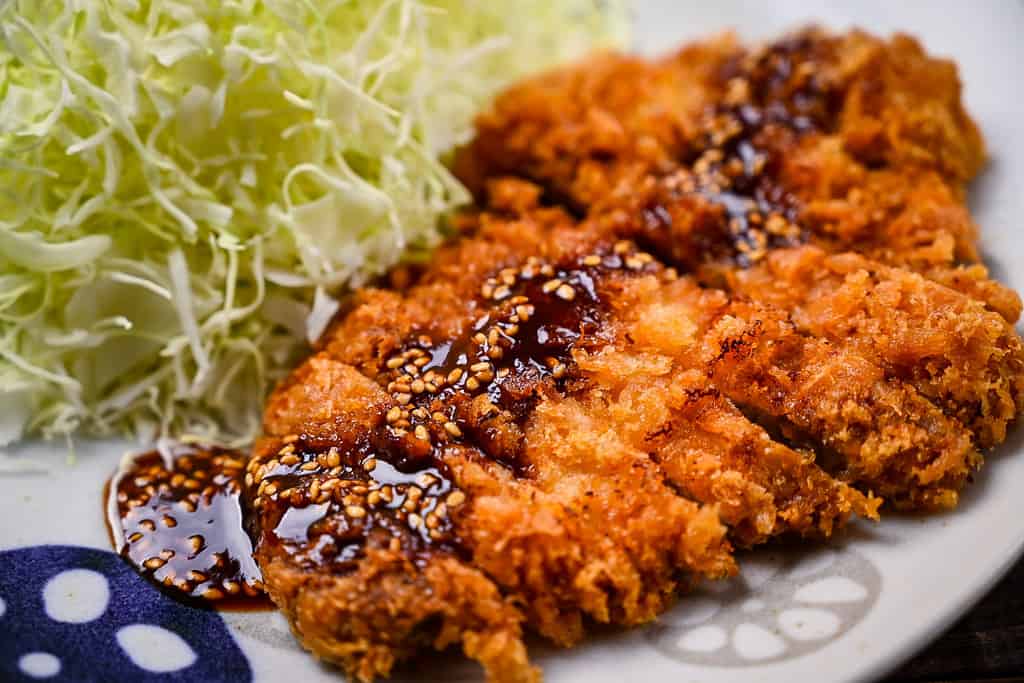
Ingredients & Substitution Ideas
- Thick boneless pork chops (2-2.5cm/¾-1 inch thick): If you want to make a great tonkatsu, you’ve got to get the right cut. If you’re looking for something leaner, go for the loin or tenderloin with a thin layer of fat along one edge. Or, if you want something richer and meatier, try boneless ribs. Thick slices will give you that satisfying crunch-to-juicy-meat ratio.
- High-temperature neutral oil: Go for a neutral oil with a high smoke point (170-180°C/340-355°F) such as rice bran oil (my personal preference), canola, or refined sunflower.
- Batter & Coating: All-purpose flour, egg, and whole milk. Mixing the egg with the milk helps stretch the mixture and helps make the meat more tender.
- Panko breadcrumbs: The defining element that separates tonkatsu from regular cutlets. For the best crispy experience, try making your own panko—it’s easier than you might think! Japanese panko has a distinctive airy, flaky structure unlike other breadcrumbs. If you’re interested in learning more about panko, check out my post about making your own panko at home.
- Homemade sauce: Just blend Worcestershire sauce, tomato ketchup, soy sauce, light brown sugar, and white sesame seeds for a perfect balance of tangy, sweet, and umami flavors that complement the crispy pork perfectly.
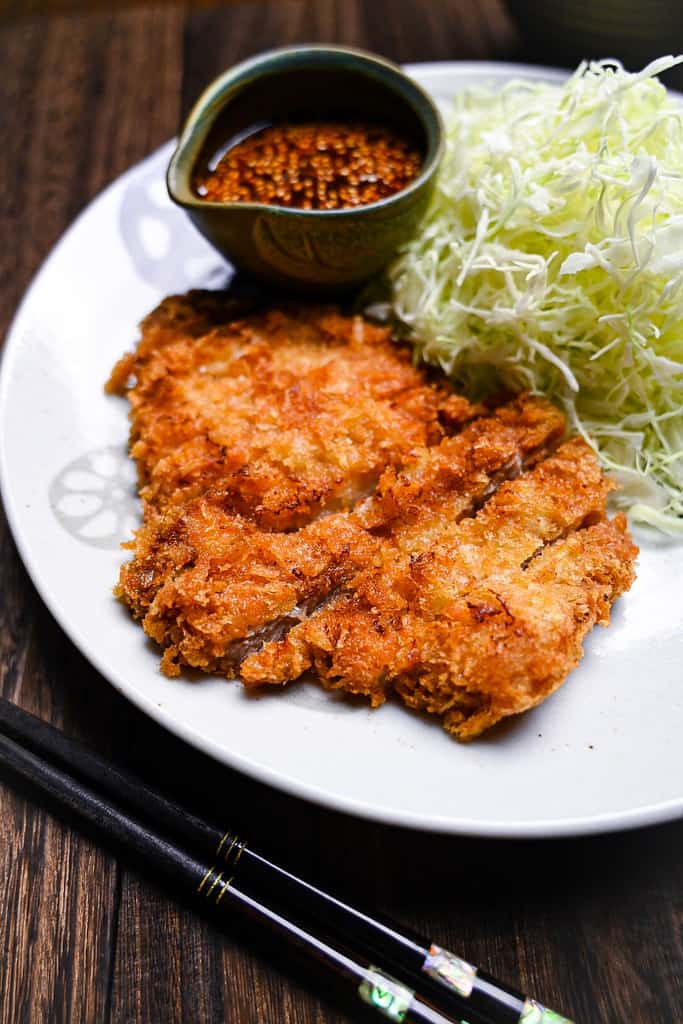
Visual Walkthrough & Tips
Here are my step-by-step instructions for how to make ultimate crispy and tender Japanese Tonkatsu at home. For ingredient quantities and simplified instructions, scroll down for the Printable Recipe Card below.
If you prefer to watch the process in action, check out my YouTube video of this recipe for a complete visual walkthrough!
Start by preparing your tonkatsu sauce, allowing the flavors to meld while you work on the pork. Add the Worcestershire sauce, ketchup, Japanese soy sauce, light brown sugar, and white sesame seeds to a small bowl and whisk until well combined. Set aside for later.
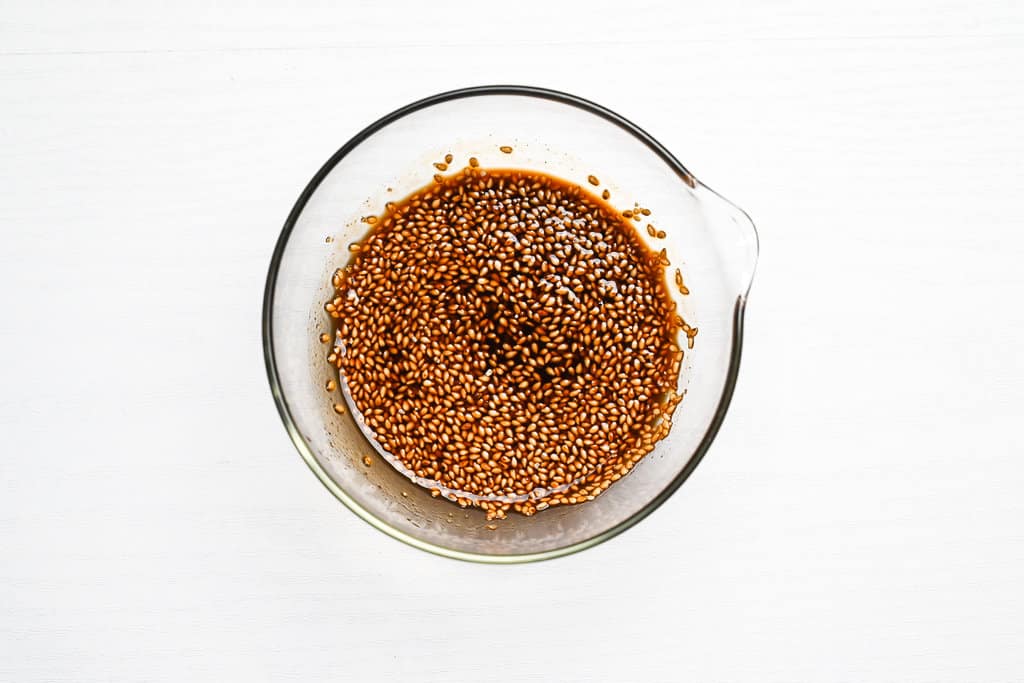
You can also try grinding some of your sesame seeds in a mortar and pestle, and leaving the rest whole. This will release more of the nutty oils and create a different texture.
If you’re looking for some different ideas for sauce, you should check out my three different tonkatsu sauces!
Preheat your oil to 170°C (340°F). While you wait, make sure the pork cutlets are prepared properly to get the best texture and even cooking.
First, grab your cold pork straight from the fridge. Cold meat helps the coating stick better because the temperature difference affects how moisture escapes from the meat.
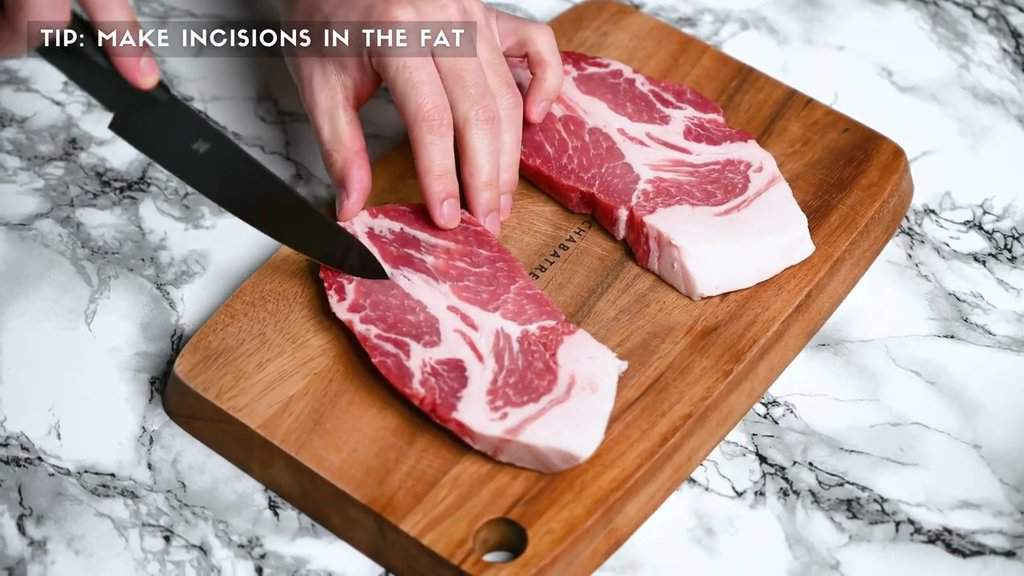
Using a sharp knife, make strategic incisions in the connective tissue between the fat and meat. Make shallow cuts about 1cm apart along the edge where the white fat meets the pink meat. Also, make 2-3 cuts into any visible muscle fibers running through the meat.
Fat and muscle contract at different rates when heated. If you don’t cut these parts, your tonkatsu is going to curl up when you fry it, and it’ll end up being cooked unevenly. Also, cutting the muscle fibers keeps the meat from getting tough and chewy when you cook it, since these fibers tighten up when heated.
Pat your pork dry with paper towels. This step is key because it gets rid of any surface moisture that could create steam during frying, which would mess up the coating.
Sprinkle both sides with a bit of salt and pepper, and then pound the meat with the flat side of a meat mallet, starting in the center and working out until it’s all even and about 2 cm (¾ inch) thick.

Just be careful not to pound the meat too thin. For tonkatsu, about 2cm is perfect. Thinner meat will cook too quickly and dry out, while thicker cuts won’t cook through properly at the same rate the coating becomes golden.
Prepare a “coating station” with three wide containers. Add flour to one and panko breadcrumbs to another. In the middle container, crack an egg and add a tablespoon of whole milk and a teaspoon of cooking oil. Whisk together until smooth but be careful not to overmix or create too many bubbles.
Adding oil to your egg mixture is a key step in my recipe. The oil creates a moisture barrier that prevents the coating from separating during frying and helps lock in the meat’s juices. The milk proteins further tenderize the meat and add richness to the flavor profile.
Place the pork in the flour and coat both sides thoroughly. This first layer of flour acts as a dry surface for the egg mixture to adhere to. Gently pat off any excess flour—too much will create a gummy layer between the meat and egg.
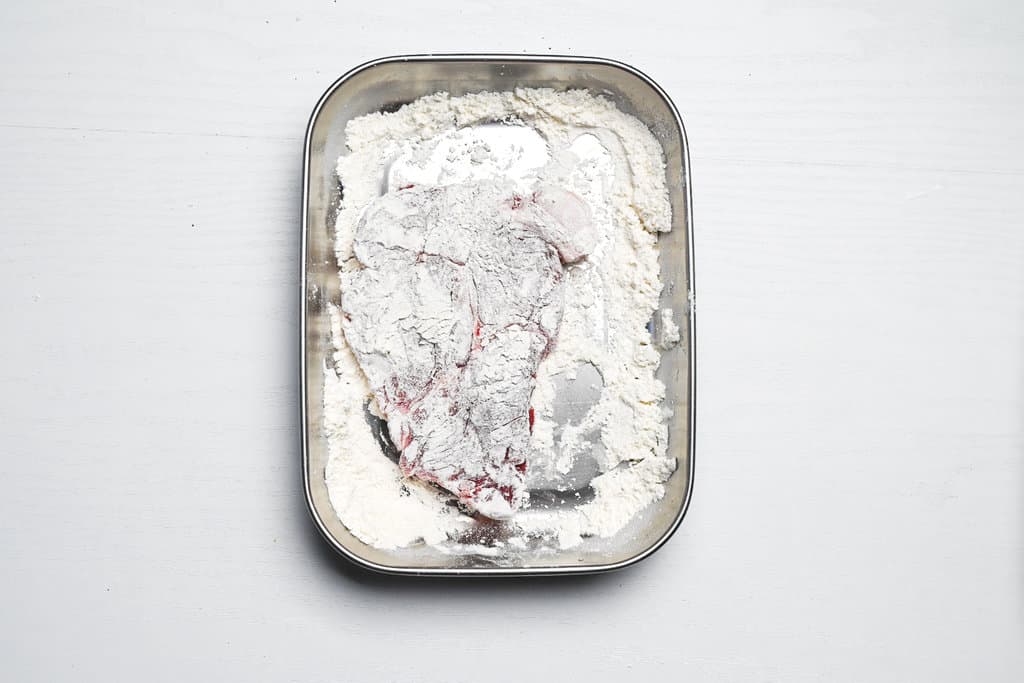
Then, put it in the egg mixture, making sure to coat both sides evenly. Let any extra liquid drip off for a few seconds. The egg is like the glue that’ll hold the final panko layer in place.
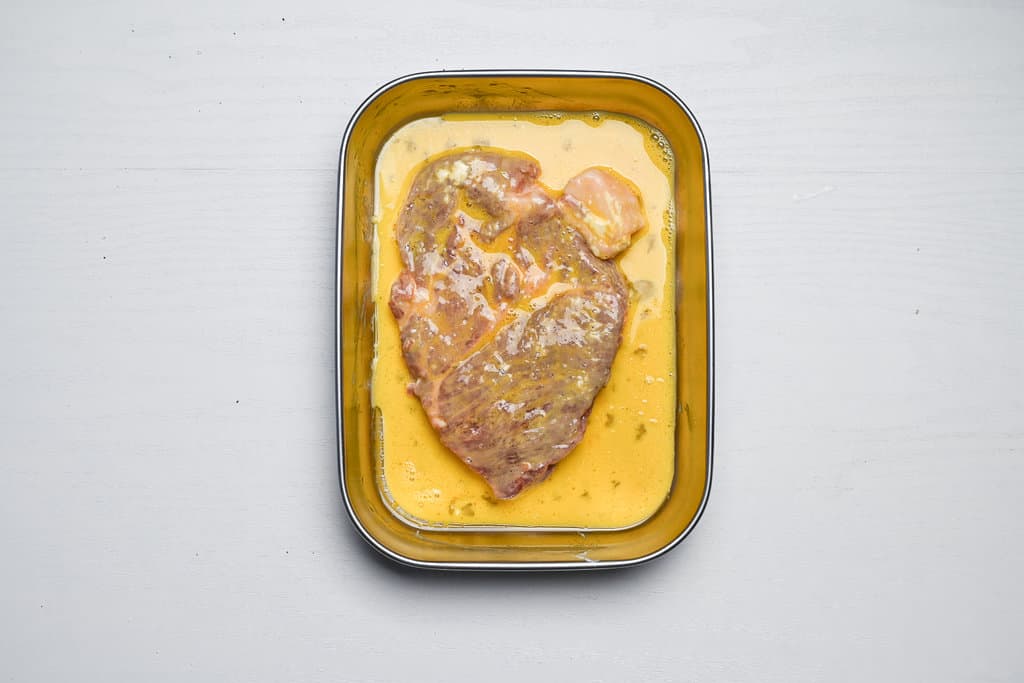
Lastly, add the panko breadcrumbs, pressing them gently but firmly into the surface. The pressure helps the breadcrumbs stick properly without squishing them too much, which would reduce their ability to create that signature airy crunch.
If you’re looking for that classic crispy texture, try “nama panko” (fresh panko). It’s got more moisture than the dried version. You can easily make it by just blitzing some fresh bread. For more details on how to make it and what kind of bread works best, check out my panko guide.
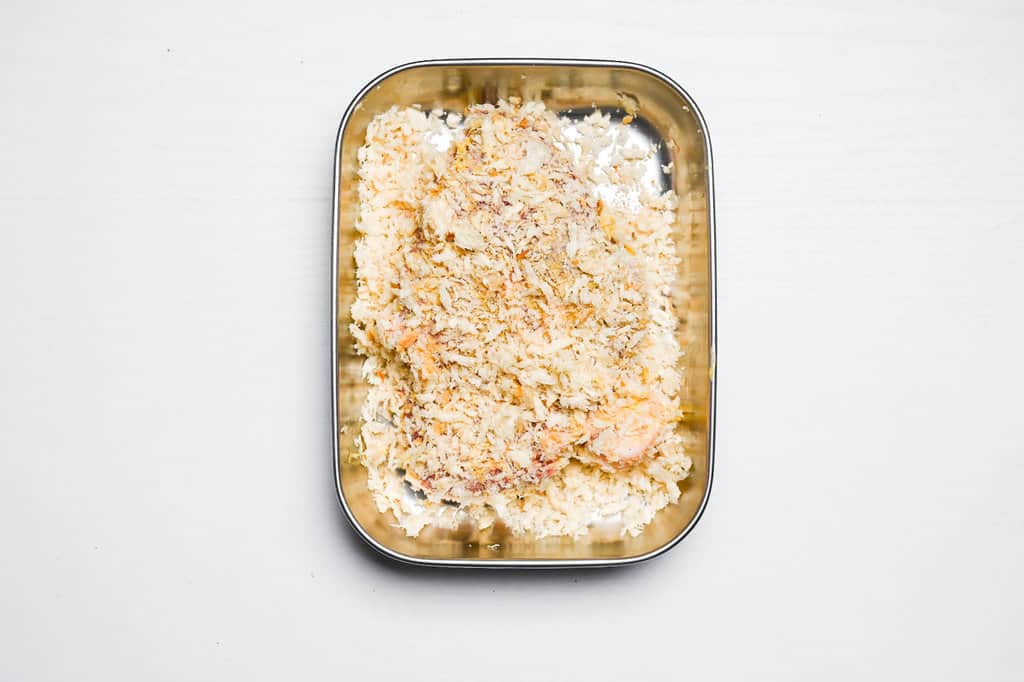
After coating the pork, let it rest for 15 seconds before frying. This brief resting period allows the three layers to bond properly and stabilize, significantly reducing the chance of the coating separating during cooking.
Make sure you’re using enough oil—the pork should float freely without touching the bottom of the pan. Rice bran oil is my go-to choice as it has a high smoke point and neutral flavor that won’t interfere with the delicate taste of the pork.
When the oil hits 170°C (340°F), carefully slide the coated pork into the oil. Now, here’s the most important rule: don’t touch the meat for at least 30 seconds! This lets the coating set properly and prevents it from separating from the meat.
You can tell the oil is around 170°C when you insert wooden chopsticks and observe small bubbles slowly forming at the tip—too many rapid bubbles means the oil is too hot, hardly any bubbles means it’s too cool.
When you first add it to the oil, it will crackle loudly. This is the reaction between the oil and the moisture in the meat. As it cooks, the crackling gets quieter, this is how you can tell if its cooked all the way through by sound.
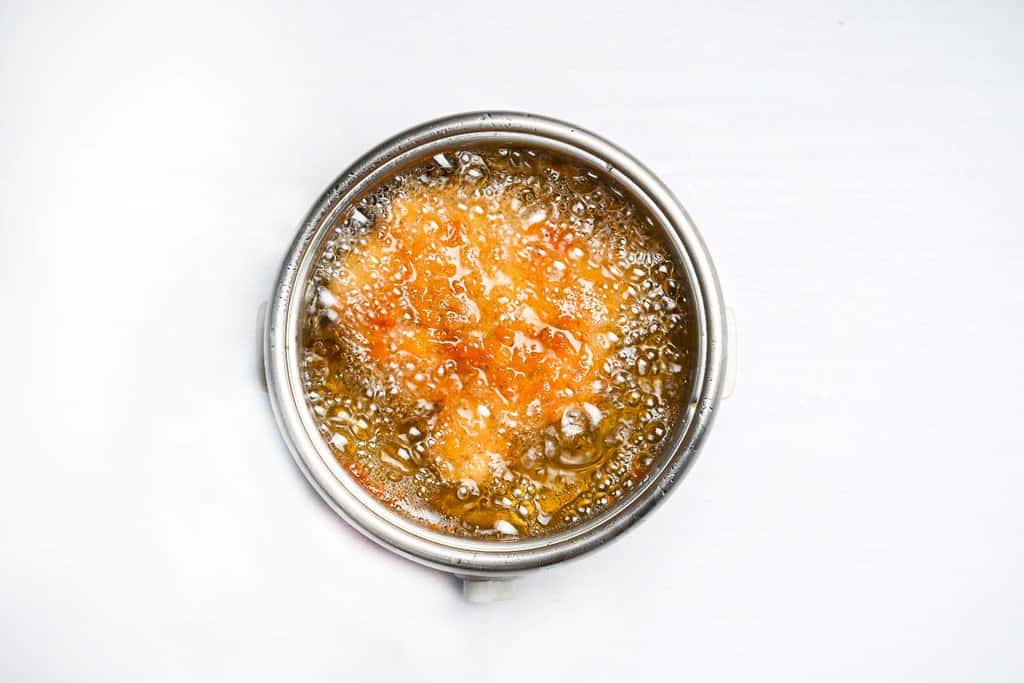
Fry each side for approximately 4 minutes for a total of 8 minutes, or until the coating reaches a deep golden brown.
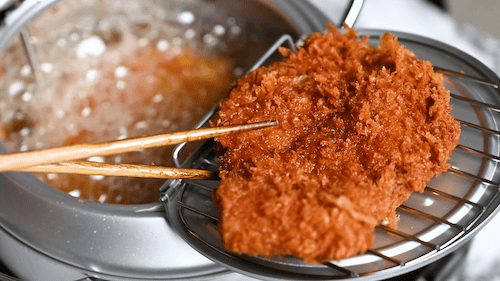
Once golden and cooked through, transfer the tonkatsu to a wire rack—never directly onto paper towels, which trap steam underneath and make the bottom coating soggy. Allow it to rest for 5 minutes before cutting, giving time for the juices to redistribute throughout the meat.
Use a sharp knife and cut the tonkatsu into strips about 2cm wide. The proper cutting technique is to press downward with a single, clean motion rather than sawing back and forth, which can tear the crispy coating.
Serve immediately with your homemade sauce and shredded cabbage!
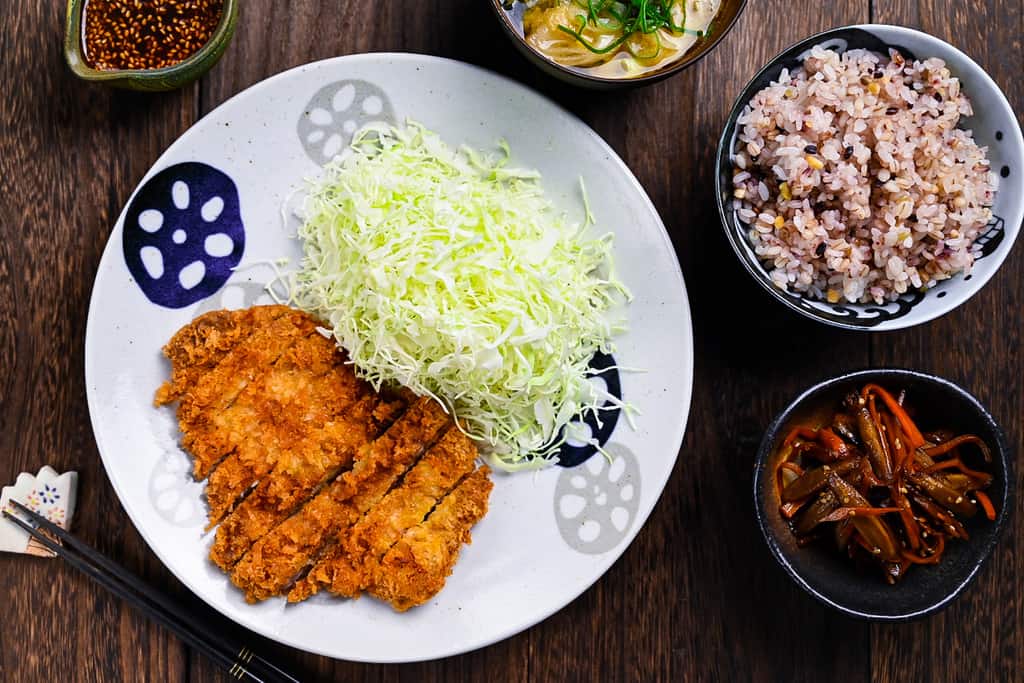
Enjoy!
Jump to Full Recipe MeasurementsEssential Tips & Tricks
- Cold meat works best – Use pork straight from the refrigerator for better breading adhesion.
- Cut the connective tissue – Make small cuts 1cm apart where fat meets meat to prevent curling.
- Add oil to your egg mixture to create a moisture barrier that prevents coating separation.
- Let the breaded pork rest for 15 seconds before frying to stabilize the layers.
- Use enough oil so the cutlet floats freely without touching the bottom of the pan.
- Don’t touch the meat for at least 30 seconds after placing it in the oil – this allows the coating to set.
- Listen to the cooking sounds – loud crackling that gradually becomes quieter indicates proper cooking.
- Always drain on a wire rack, never on paper towels which trap steam and make the bottom soggy.
With these simple tips in mind, you’re set for success every time you make the best tonkatsu!
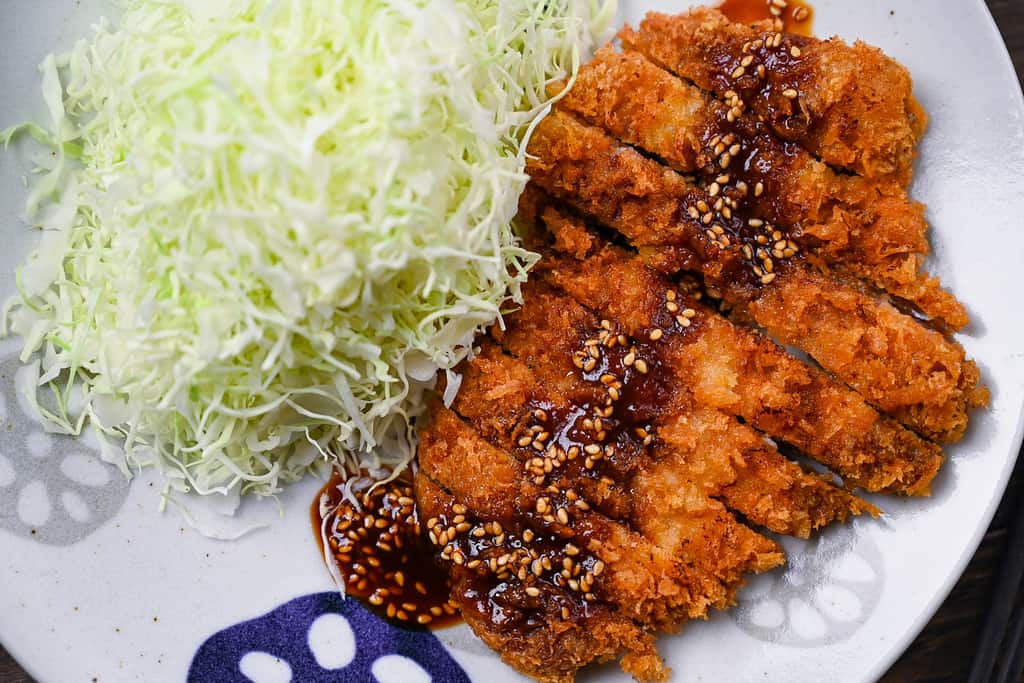
Troubleshooting and FAQ
One of the biggest problems you might face when making homemade tonkatsu is the crumb layer not sticking to the surface of the pork. Uneven and messy tonkatsu with gaps is my worst nightmare!
Let’s look at the potential causes and how to prevent them!
Meat, including tonkatsu, tends to shrink when heated, leading to gaps between the batter and meat, causing the batter to peel off. To prevent this, it’s essential to pound the pork chops before cooking. However, it’s crucial to start with thick pork cuts; pounding too thin results in a less desirable, floppy tonkatsu. Thus, using thick, pounded pork chops is key to ensuring the batter stays intact.
The batter for traditional tonkatsu consists of flour, eggs, and breadcrumbs, each vital to the dish’s integrity. Any inconsistency in one layer affects the subsequent ones. Inadequate coating can cause the batter to peel off over time. It’s essential to apply each layer generously but without overdoing it, striking a careful balance. Ensuring a firm and even battering for each layer is undoubtedly crucial.
Achieving the ideal golden crust for tonkatsu hinges on using plenty of oil and maintaining the right frying temperature. Too hot, and you risk burning the batter with undercooked pork. Too cool, and the outcome is a pale batter with dry, tough pork. To sidestep these pitfalls, opt for oils with high smoke points and maintain a frying temperature of 170°C (340°F).
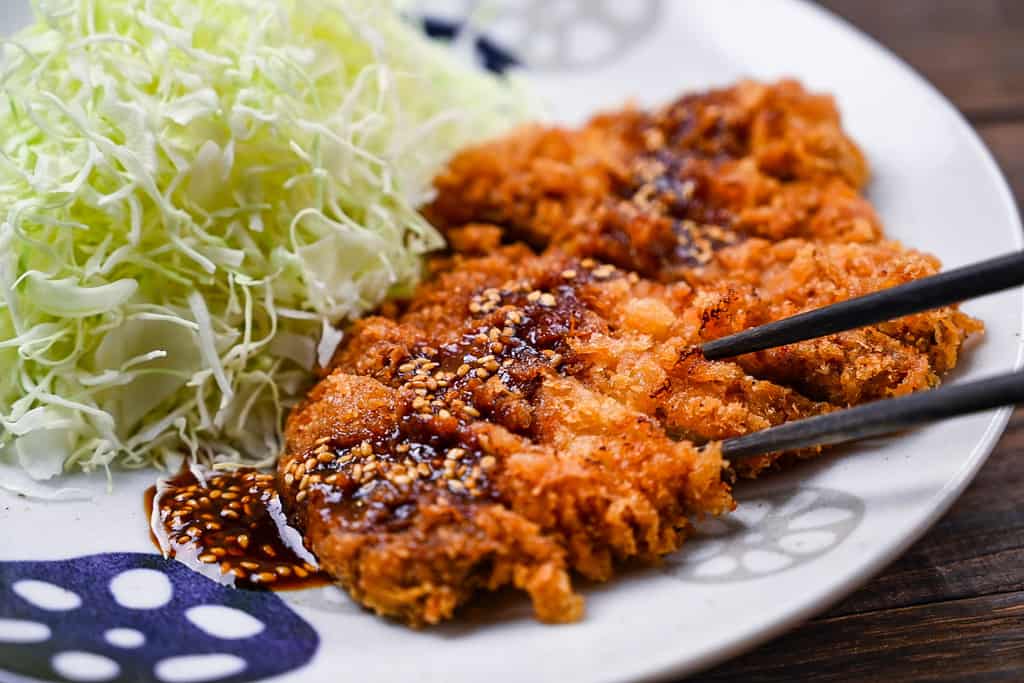
Meal Prep & Storage
Tonkatsu offers several meal prep and storage options, but you’ll need specific techniques to maintain quality.
Meal Prep Options
- Raw Prep (Best Option): You can prepare the meat (trimming, making cuts in the connective tissue) up to 1 day ahead and store it tightly wrapped in the refrigerator. The tonkatsu sauce can be made up to 1 week ahead.
- Breaded Prep (Use Caution): While you can bread cutlets ahead of time, it’s not ideal as meat juices will seep out and make the breadcrumbs soggy. If you must bread ahead, freeze immediately after coating rather than refrigerating.
- Freezing Breaded Uncooked Cutlets: After breading, place cutlets on a metal tray for quick freezing, then wrap each piece individually in plastic wrap and store in an airtight freezer bag for up to 2 weeks.
For frozen breaded cutlets, cook directly from frozen without thawing. Start at a lower temperature (150°C/300°F) to cook the meat through completely, then finish at a higher temperature (170-180°C/340-360°F) to crisp the coating. Cooking at high heat the entire time will result in a burnt exterior and an undercooked interior.
Storage & Reheating
For cooked tonkatsu, allow it to cool completely before storing.
- Refrigerate for up to 2 days by placing on a plate lined with paper towels and covering with plastic wrap.
- For longer storage, freeze for up to 1 month by wrapping each cutlet individually in plastic wrap, then placing in an airtight freezer bag.
When reheating refrigerated tonkatsu, use a toaster oven or conventional oven to restore crispiness. For frozen tonkatsu, partially defrost in the microwave (without plastic wrap), then finish in a toaster oven, conventional oven, or air fryer.
Serving Suggestions
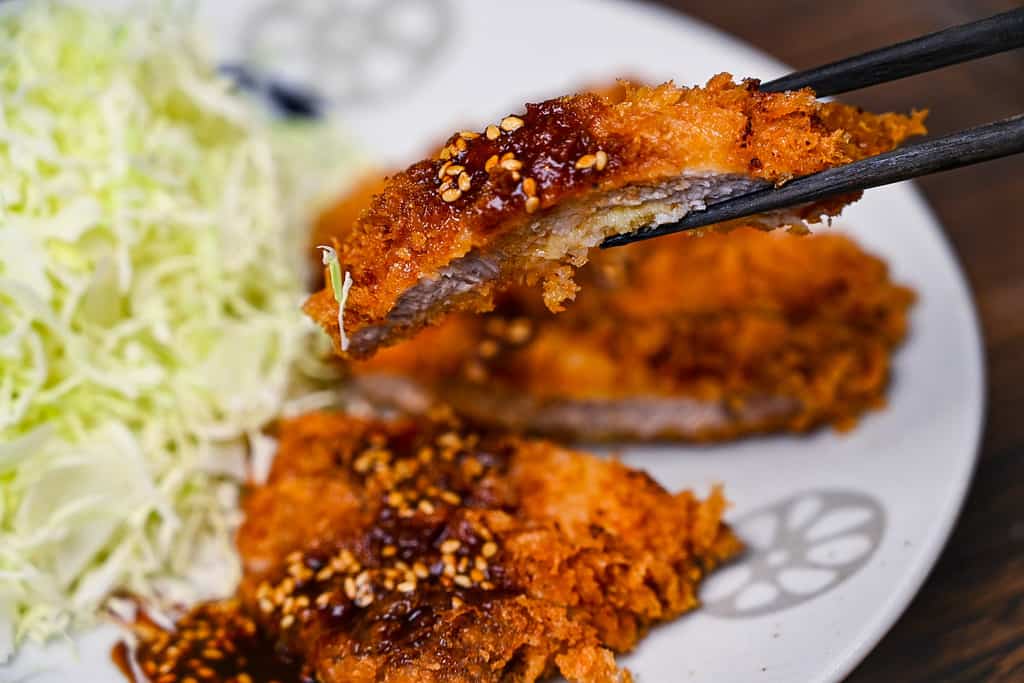
I hope you enjoy this Japanese Tonkatsu recipe! If you try it out, I’d really appreciate it if you could spare a moment to let me know what you thought by giving a review and star rating in the comments below. It’s also helpful to share any adjustments you made to the recipe with our other readers. Thank you!
More Japanese Dinner Recipes
- Hambagu (Japanese Hamburger Steak)
- Beef Hayashi Rice (Without Roux Packet)
- Japanese Style Mapo Tofu (Mabo Dofu)
- Teriyaki Beef Rice Bowl with Wasabi Twist
Want more inspiration? Explore my Japanese Dinner Recipe Roundup Post for a carefully selected collection of tasty recipe ideas to spark your next meal!
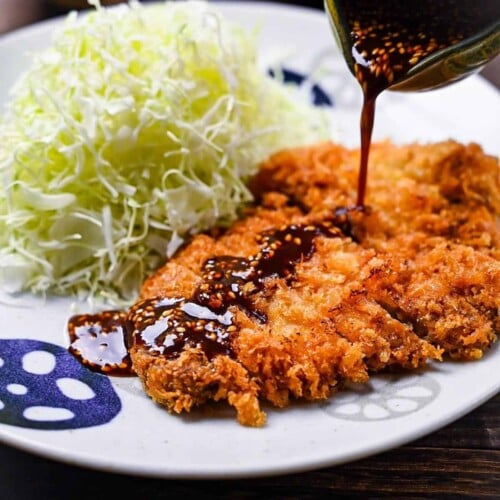
Best Tonkatsu with Homemade Sauce (Japanese Pork Cutlet)
Equipment
- Japanese-style fryer
- Stainless steel cooking tray with wire rack
Ingredients
Tonkatsu Sauce
- 2 tbsp Worcestershire sauce
- 1 tbsp tomato ketchup
- 1 tbsp Japanese soy sauce (koikuchi shoyu)
- 1 pinch light brown sugar
- 1 tbsp toasted white sesame seeds
Tonkatsu
- 2 boneless pork chops or loin/tenderloin – thick ones (2-2.5cm, 3/4-1 inch) work best
- 1 pinch salt and pepper
- cooking oil for deep frying, I used rice bran oil
- all-purpose flour for dusting
- 1 egg
- 1 tbsp whole milk
- 1 tsp cooking oil
- 100 g panko breadcrumbs
Serve with (optional)
- 2 portions cooked Japanese short-grain rice
- 200 g green cabbage shredded
- 2 slices lemon to garnish
My recommended brands of ingredients and seasonings can be found in my Japanese pantry guide.
Can’t find certain Japanese ingredients? See my substitution guide here.
Instructions
Tonkatsu Sauce
- Mix 2 tbsp Worcestershire sauce, 1 tbsp tomato ketchup, 1 tbsp Japanese soy sauce (koikuchi shoyu), 1 pinch light brown sugar and 1 tbsp toasted white sesame seeds in a small bowl and set aside for later.

Tonkatsu
- Preheat the oil to 170 °C (338 °F). While you wait, prepare the pork.

- Take 2 boneless pork chops and make incisions in the fat and muscle (this improves texture and prevents curling). Rub 1 pinch salt and pepper onto both sides of the meat, then pound until about 2cm thick. (Approx 3/4 inch)

- Set up a coating station with 3 containers. One with all-purpose flour, one with whisked 1 egg and one with 100 g panko breadcrumbs.Add 1 tbsp whole milk and 1 tsp cooking oil to the egg and whisk until combined.

- Coat the pork with flour on both sides. Make sure to pat off the excess.

- Transfer to the egg mixture and coat on both sides.

- Next place it into the panko breadcrumbs. Make sure it’s fully covered and gently press the panko down to secure them.

- Carefully place the coated pork chops into the oil and cook for about 4 minutes on each side (8 minutes total) or until golden brown. Once done, transfer to a wire rack to drain any excess oil.

- Cut the tonkatsu into strips. Plate up next to the shredded cabbage, drizzle the sauce (or serve on the side) and garnish with lemon (optional).

- Serve with rice, miso soup and pickles for the perfect teishoku set meal.
Video
Notes
- Select pork cut based on preference – use loin/tenderloin for lean meat or boneless ribs for richer flavor.
- Use cold pork straight from the refrigerator for better breading adhesion.
- Let breaded cutlets rest for 15 seconds before frying to stabilize the coating layers.
- Don’t touch the meat for at least 30 seconds after placing it in oil to allow the coating to set.
- For shallow frying, monitor carefully to prevent panko from burning against pan bottom.
- If you’re looking for some different ideas for sauce, you should check out my three different tonkatsu sauces!
- Store leftovers by wrapping individual pieces in plastic and freezing for up to 1 month; reheat in oven after partial microwave defrosting.
- For a classic teishoku, servi this tonkatsu with freshly cooked plain rice, miso soup, and some Japanese pickles.
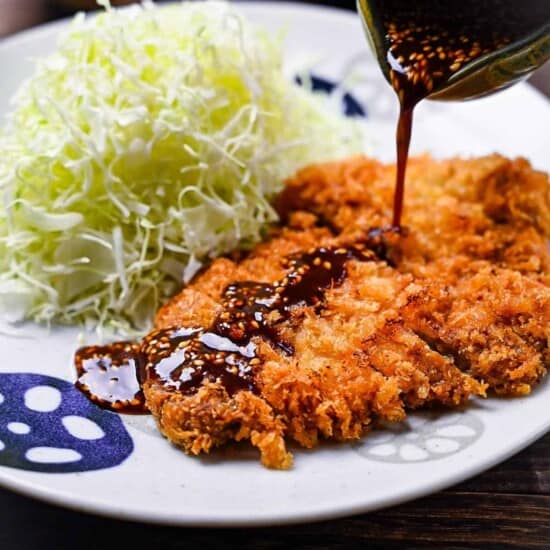





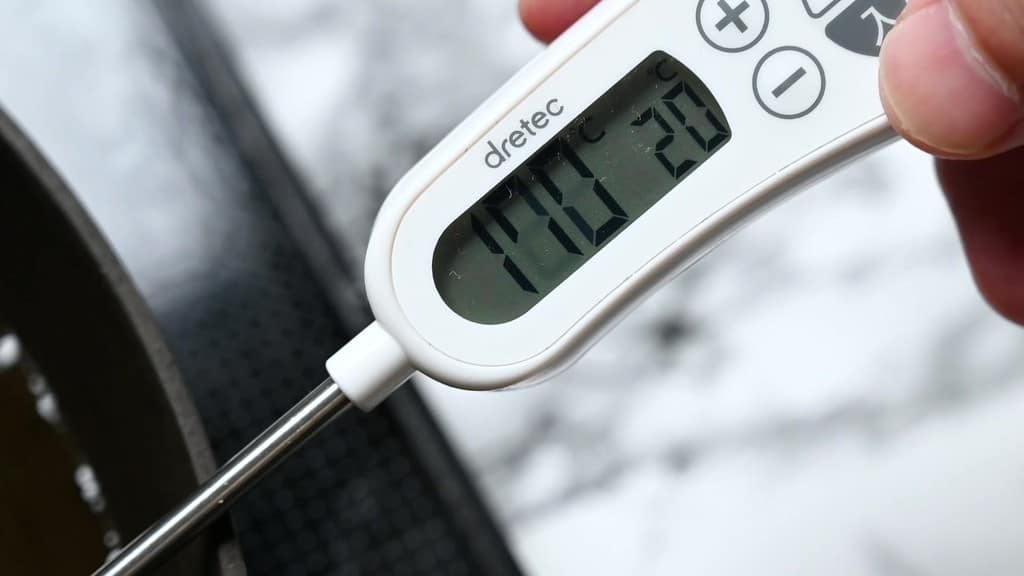
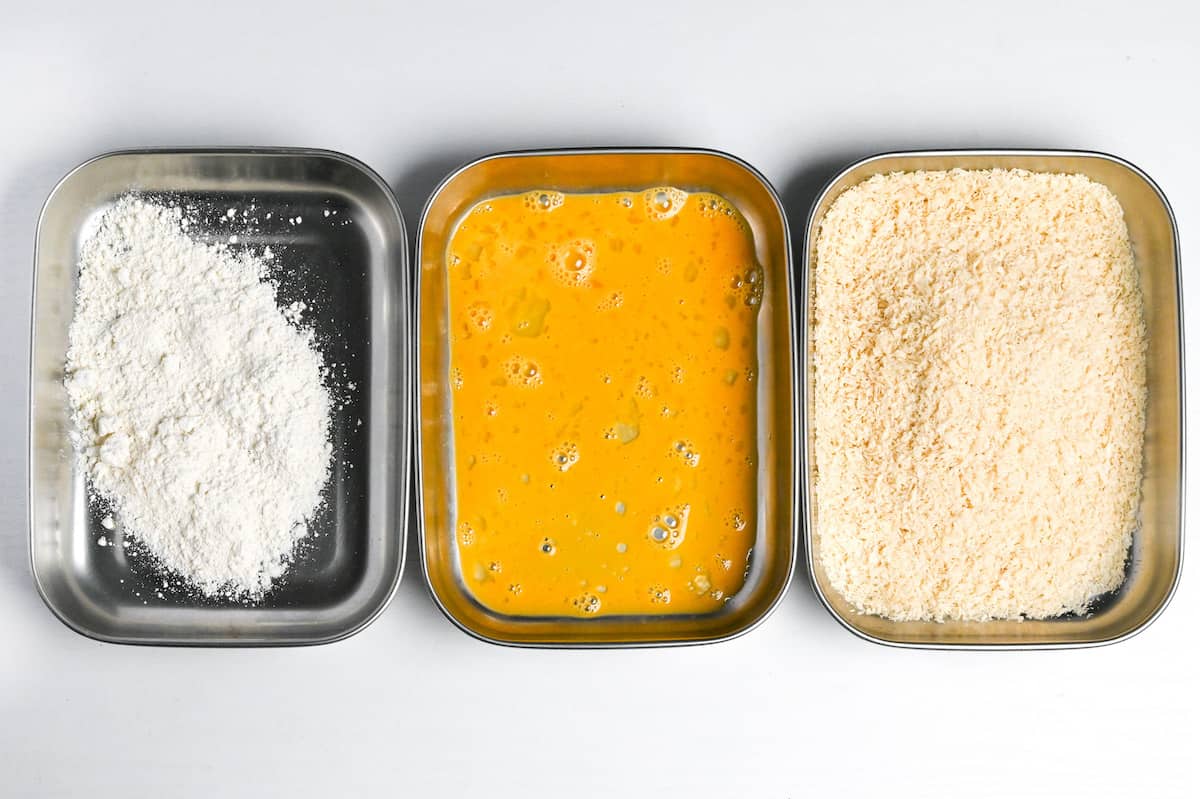
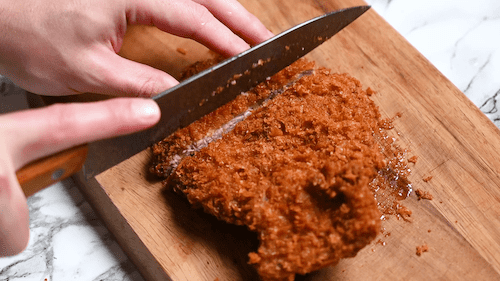
Hello and thank you for the recipe! I wonder what is the purpose to put milk and oil to the egg mixture? Thank you 🙂
Hi, thank you for the rating!
I add milk because it’s said to help make the meat softer and more tender. Adding oil is a trick that restaurants use to help make the egg smoother so it coats the katsu more evenly and stops the panko falling off. Apparently it also makes a thin layer around the meat which keeps the flavour inside too. Hope that helps, thanks for your question! 🙂
Thank you! Somehow I don’t receive email notification of your reply, sorry.
I love your recipe, they are simple and some even give a different approach compared to other recipe.
Hope you can continue to share.
Thank you and take care, ganbatte!
Thank you so much, it means a lot!
If you have any questions, feel free to contact me anytime 🙂
I’ll keep working hard to create good recipes, all the best!
Yuto
Sasuga!
Great recipe and wonderful instructions. I went with another sauce recipe that tasted closer and consistency I remember. The cutlets turned out perfect! You keep coming up as my favorite Japanese food recipe source. So delicious!
Hi Erin
Glad to hear you enjoyed the recipe! Thank you so much for your kind words, it means a lot!
It wasn’t my first katsu, but definitely THE BEST katsu. I used chicken as I’m not a big fan of pork (but definitely gonna try the recipe again with pork chops!).
I absolutely loved sesame seeds in the sauce. Your hint with adding oil to the egg was game changing (no more falling panko, yass!!).
It’s a pity I haven’t discovered your blog earlier!
Greatings from Poland!
Hi Claudia,
Thank you for your kind words and sharing your experience!
I’m so happy that you think this is the best katsu recipe! 🙂
Yuto
great presentation on making Tonkatsu. easy to follow recipe. thank you
Thank you so much, Carlos!